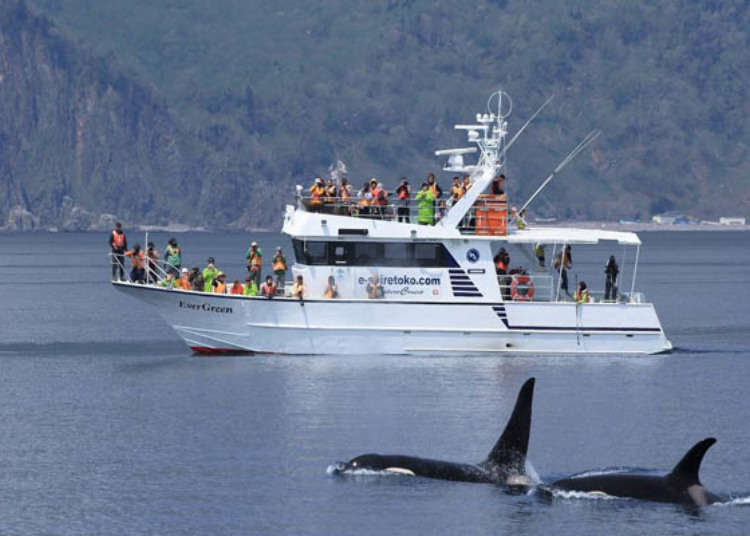
In the sea around Shiretoko, whales, dolphins and other marine mammals come closer to land, where they can find a fair amount of food. It makes for a great place to enjoy a Hokkaido whale watching experience.
The world heritage site of Shiretoko is inhabited by many wild animals such as the brown bear, Yezo sika deer, and Sakhalin fox, and is located in Hokkaido’s Shiretoko Peninsula. Not only the land but the ocean surrounding it is also registered as a World Heritage site, where aquatic animals such as plankton and fish live.
Join along as I take you on a nature discovery cruise to meet the creatures of the sea!
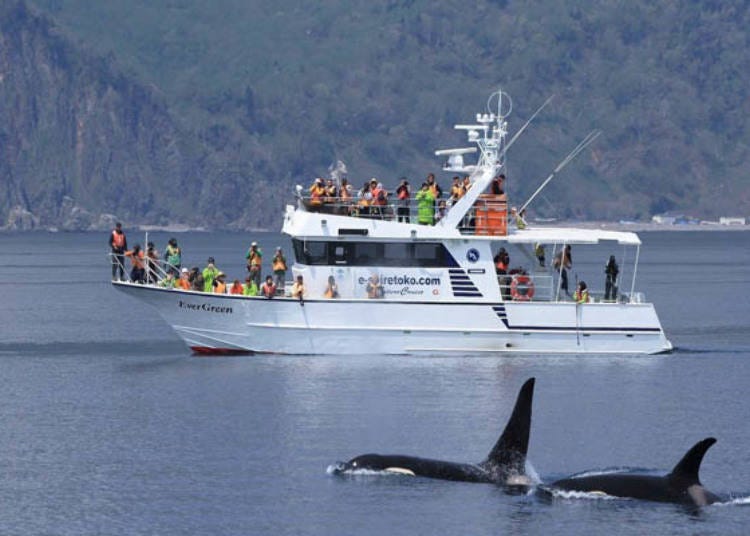
Shiretoko Rausu is one of the leading Hokkaido whale watching spots
The Shiretoko peninsula is located in Hokkaido’s northeastern part and protrudes about 70 km in the Sea of Okhotsk. In 2005 it was registered as a World Natural Heritage Site along with the coastal waters, where regardless of the season, people are left fascinated by the stunning natural scenery and wildlife.
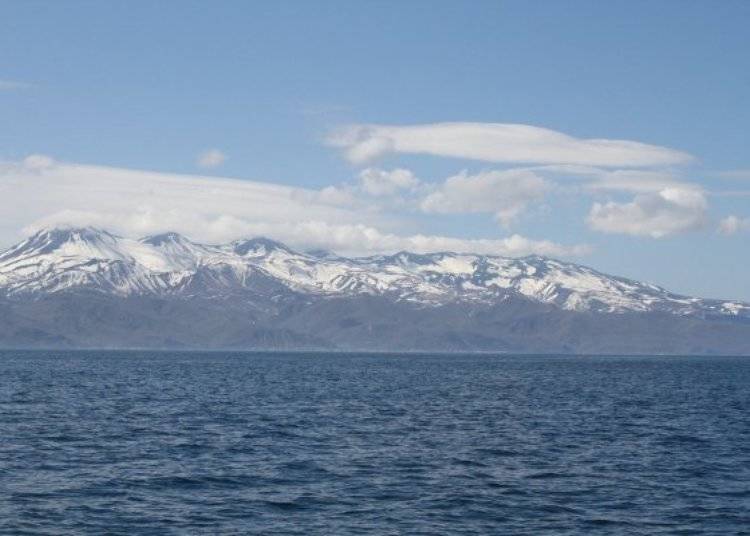
The Shiretoko Sea contains a large amount of plankton carried by drift ice, which allows both large and small fish to breed with ease. This forms an ocean teeming with life.
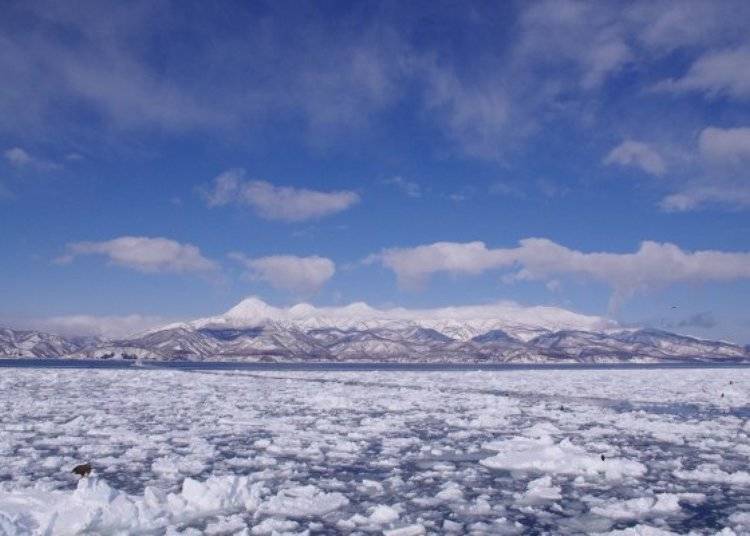
Marine mammals, such as whales, dolphins, and killer whales, migrate with them. On the east side of the peninsula, in the Rausu Sea, you are very likely to encounter them, and it is one of only a few watching spots in the world where these creatures can be observed as soon as you leave the port.
Occasionally, a large whale with a length of more than 10 m comes up for air, allowing you to see the powerful figure as it swims brilliantly from the top of the ship.
I heard that such a cruise tour departed from the port in Rausu, so I went to participate in one these Hokkaido whale watching tours during the middle of May.
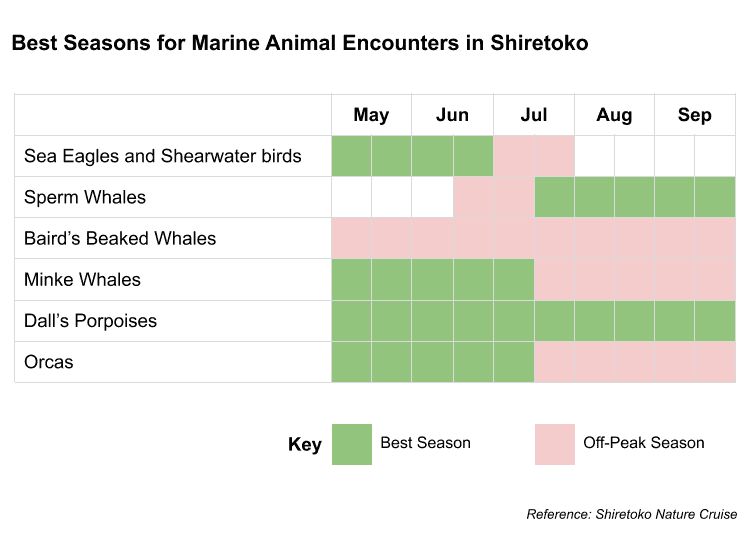
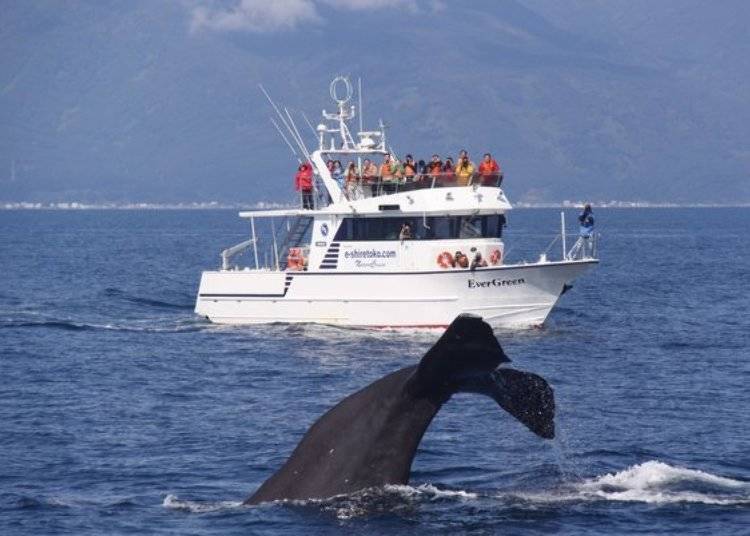
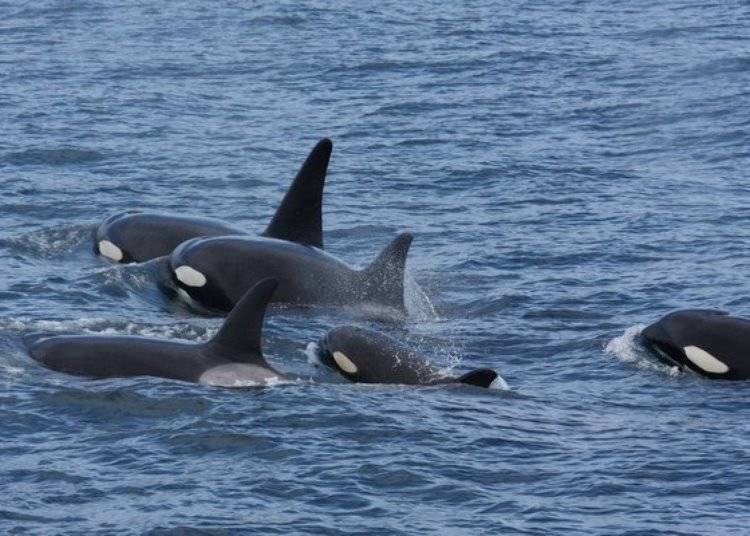
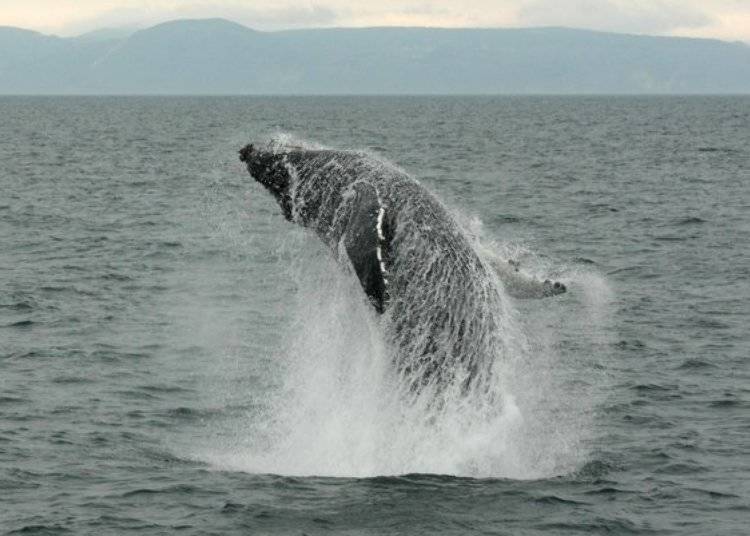
Holding my breath in anticipation, I join the Hokkaido whale watching tour!
This tour is provided by "Shiretoko Nature Cruise.” The company is a group of sea professionals, including former fisherman, and captain Masato Hasegawa, who guides tour groups safely and securely.
The touring period is from May to October, departing twice a day at 9:00 a.m. and 1:00 p.m. (three times a day during Golden Week and summer holidays; please check the website for details).
The Hokkaido whale watching voyage is approximately 2.5 hours. If there is a vacancy, same day booking is also possible, but as it is a popular tour be sure to book early!
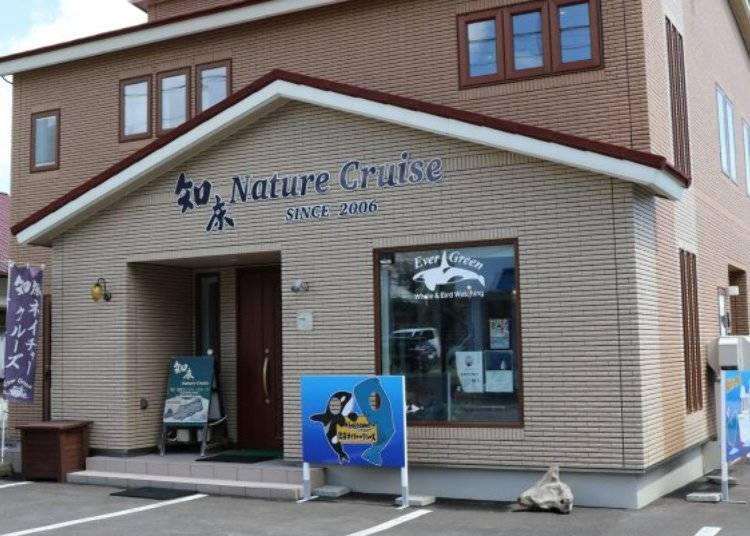
There is a café in Shiretoko called “Cho-e-maru” across the road where the captain's daughter, Yoshika, is the store manager. Here you can find handmade goods with whale and orca motifs, "Shiretoko Nature Cruises" original goods, as well as a cafe space which can be used as a waiting area until boarding.
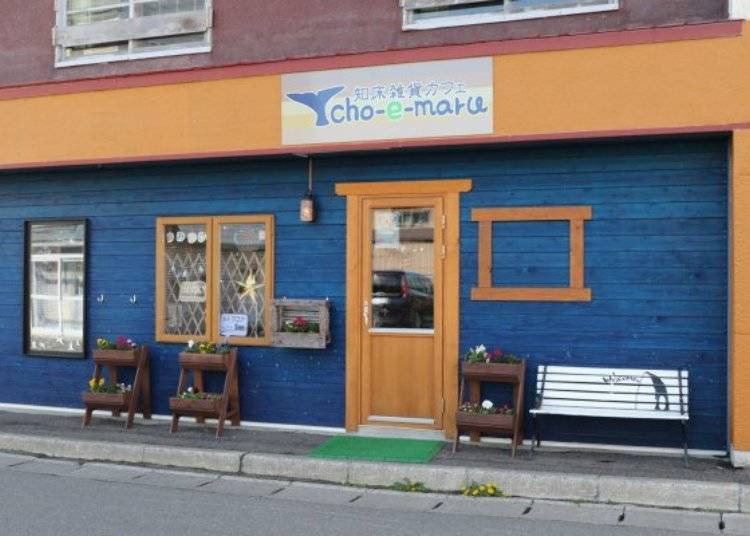
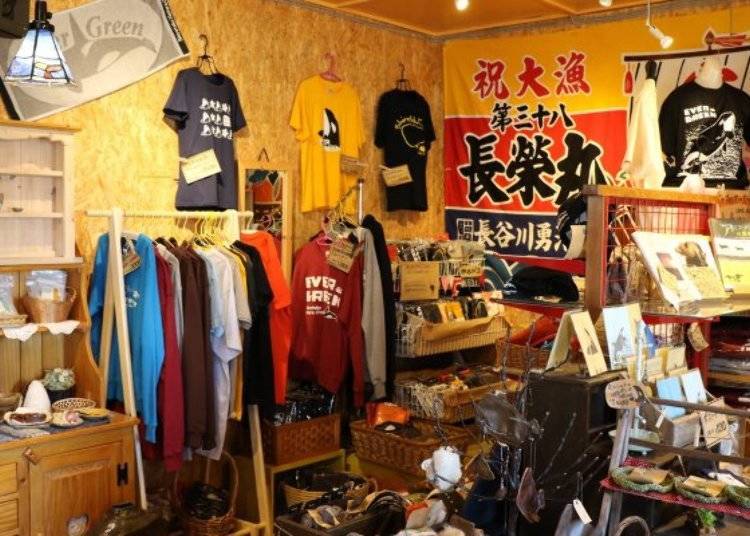
It is a 5-minute walk from the office to the harbor. There is also a parking lot in the harbor, so you can travel by car as well. The tour boat is a cruiser called the "Evergreen" which is equipped with state-of-the-art navigation facilities.
The Hokkaido whale watching ship can hold up to 50 people and is equipped with a second level deck where passengers can enjoy a comfortable cruise with a clear view of whales, dolphins, and other sea life.
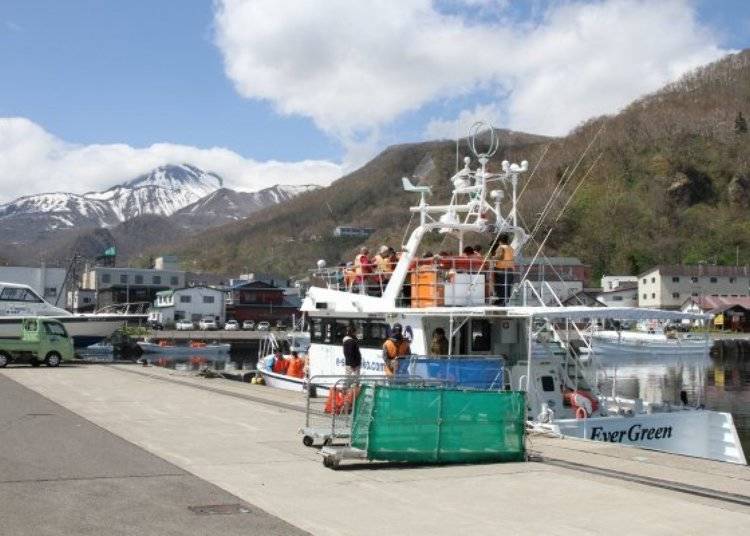
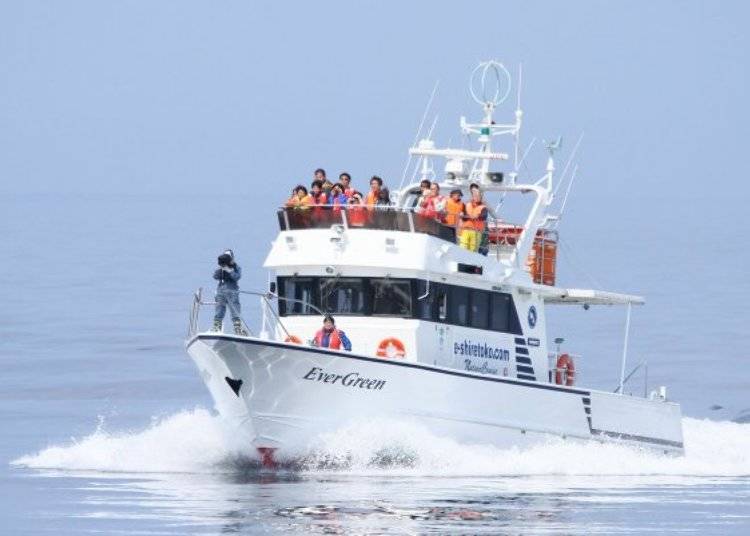
Once all the passengers are on board, the ship departs. When the ship leaves the quay Captain Hasegawa, who knows the sea of Shiretoko - Rausu, begins his rapid-fire talk, a famous part of the tour.
"The sea of Rausu, where whales and dolphins come up so close to the land, is a rare place in the world" and other statements are made such as the methods of discovery and features of animals that will be seen.
He will also introduce you to the northern territories on the Shiretoko Peninsula and its opposite bank as well as the nature and history of the city, and in addition, will speak passionately about the deep-fried seafood available in the Rausu fishing port.
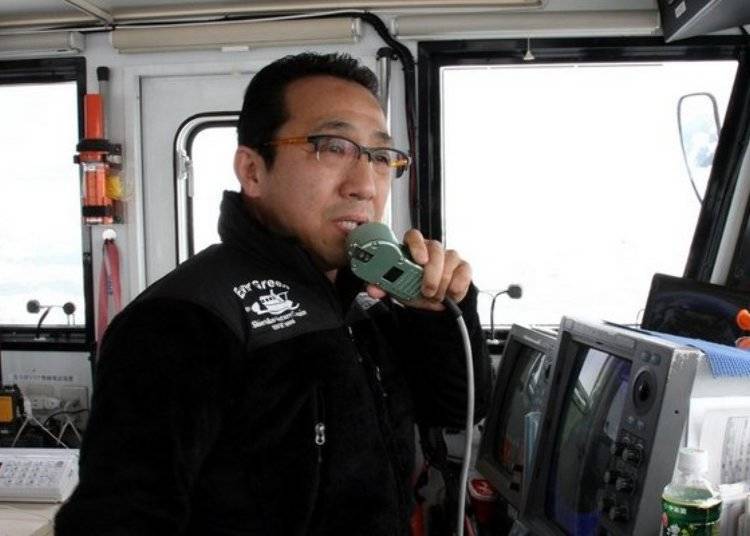
While listening to Captain Hasegawa speak, we headed out. The place was located between the Shiretoko Peninsula and the Northern Territory - Kunashir Island.
Here began our watch for wildlife while the captain was careful not to go beyond the Japan-Russian intermediate line on the Kunashir Island side.
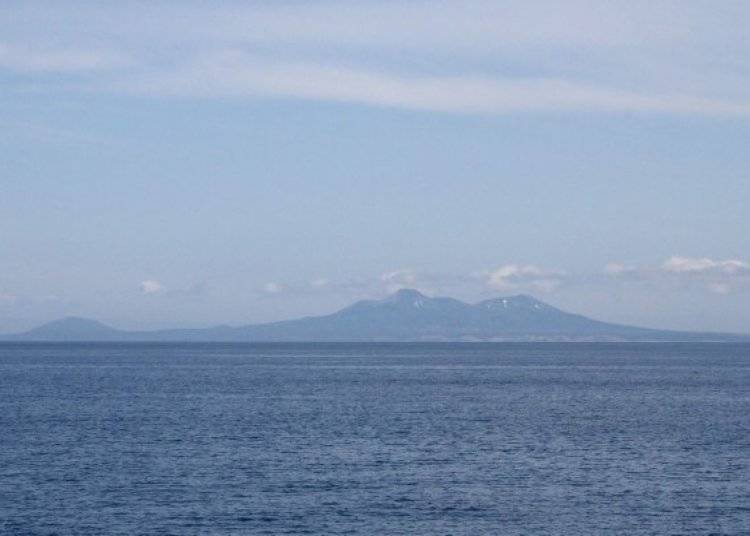
The level of comfort while on the boat was surprising. Although the waves were calm and comfortable, there was nothing that could be done about the temperature.
I went on board in the middle of May, and while it felt warm on land, out at sea on the deck for a long period of time with the wind blowing made for a very cold day.
While there are raincoats on the ship, do not forget to bring gloves and caps in the spring and autumn - as well as long-sleeved clothing like a parker even in the summer!
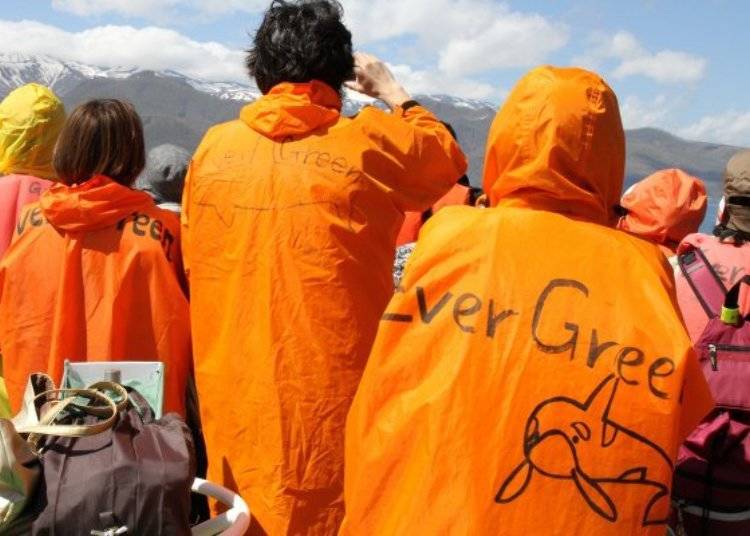
All of a sudden over the ship's speaker Captain Hasegawa announced, "There is a minke whale in the right front!" Looking at it, I could see the big black back go up and down. As the ship got closer, I could see that the size of its body was about 7 m, and I felt the merit of the tour with this quick encounter.
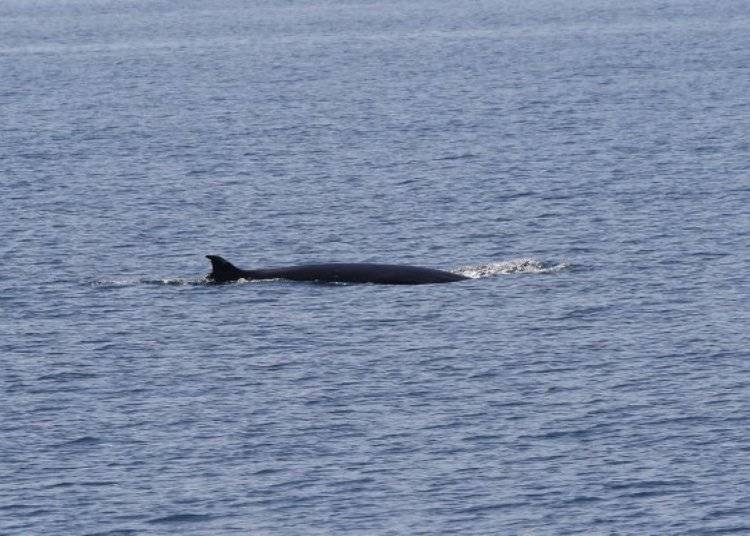
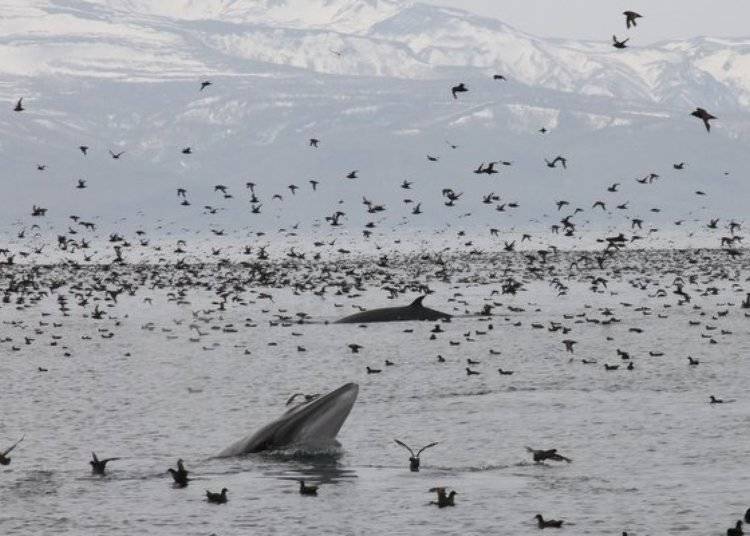
When leaving the minke whale, we look for other wildlife and go further off the coast. The others in our tour explore around the ship with the staff on deck, but it is still the staff that makes the early discovery. I noticed there were several splashes up ahead!
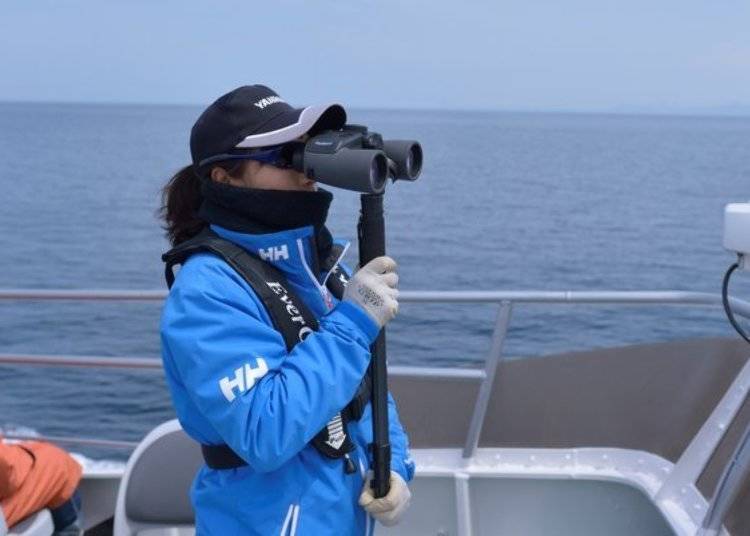
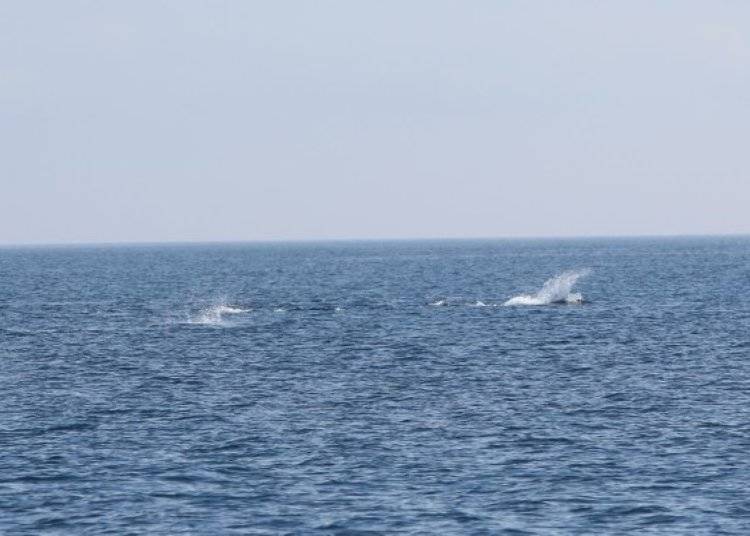
As the ship approached, I noticed that the belly was white. “A killer whale", I thought, but the staff then explained that it was a Dall's porpoise. It is often seen from May to October, and that it is approximately 2 m in size with a swimming speed of about 55 km/h. It seems that incredible speed is its specialty.
The porpoise did not appear alarmed as it swam with great intensity around the ship. “Now there is something you can’t see in an aquarium,” stated Captain Hasegawa. Everyone on the tour, including myself, was impressed.
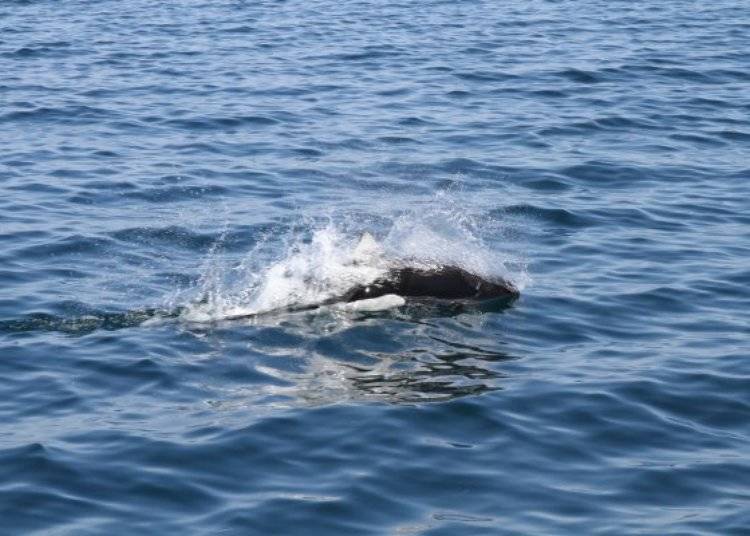
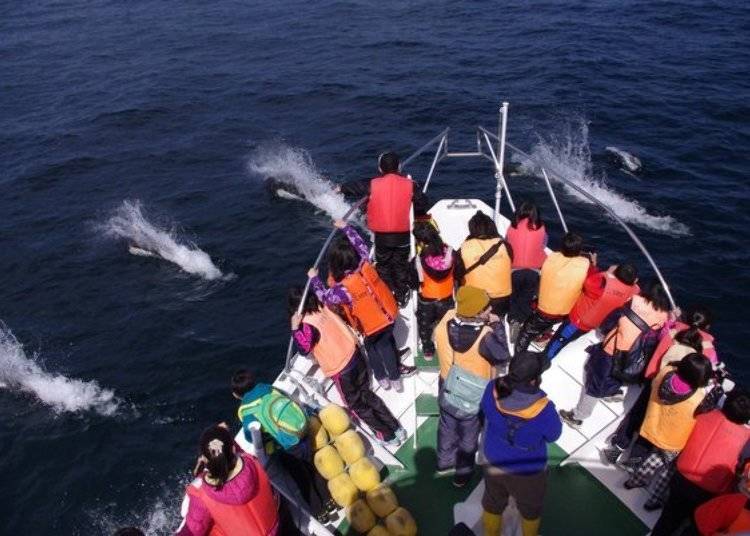
While moving to the next observation spot, the staff explained in detail using photos and illustrations on the ecology, characteristics, habits, etc. of each animal.
"Minke whales like the one seen earlier are part of the Baleen whale group; Baleen whales eat by filtering mainly zooplankton through their bristles." Here you can also expand your knowledge.
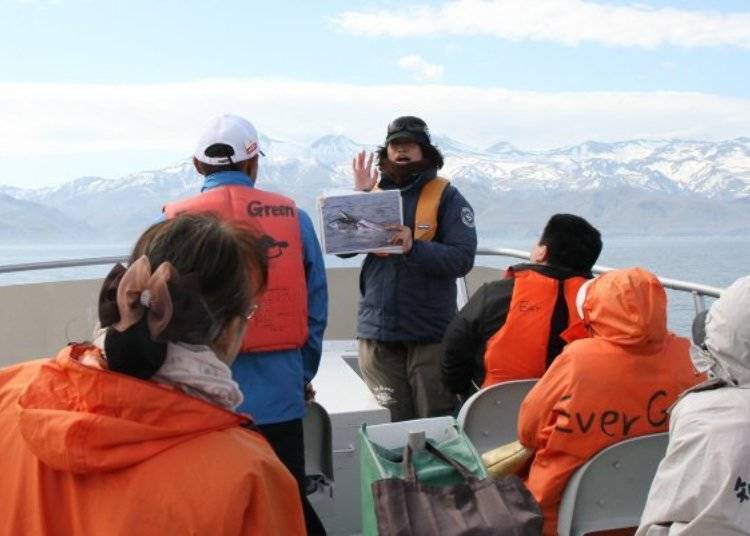
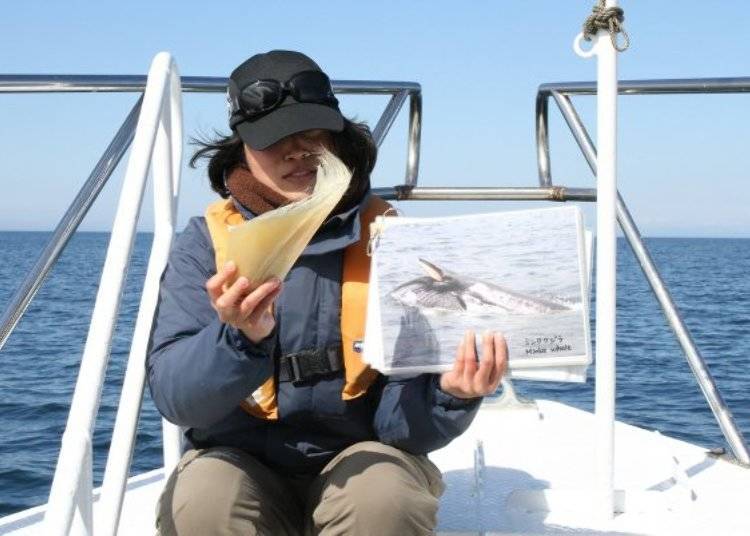
After that, I continued exploring, encountering dolphins three times! While I had expected to see an orca since there was information stating that it was seen considerably this season, I had yet to see one and it seemed that they were not in this area of the sea this day.
In the meantime, the ship was heading back to the port. In addition to the wildlife, you cannot miss the magnificent views of the mountains – and especially the highest peak of Rausu-dake, towering 1,661 m above.
Although I was surprised that we did not see any orcas when the ship arrived at the harbor Captain Hasegawa invited us to "Please come again.” It was nice to have something fun to look forward to on my next trip.
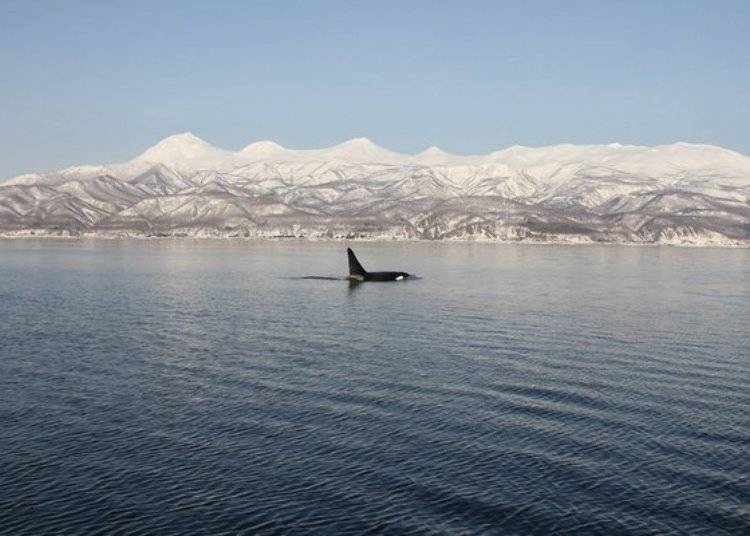
Other sea creatures you can encounter on a Hokkaido whale watching tour
On this tour I was able to see the minke whale and Dall's porpoise, but the creatures able to be seen on the tour are not limited to this one. Here is an overview of the creatures you may see in the Shiretoko - Rausu sea depending on your luck and the season.
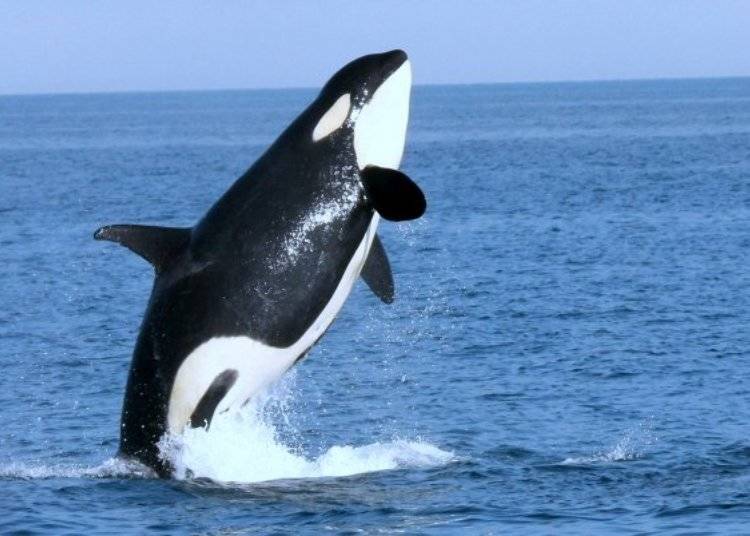
The most popular is none other that the killer whale. The Rausu Sea is a rare spot in the world where many killer whales gather.
These are said to be the strongest fighting marine animal but it is the relationship of their families that is strong with their appearance of swimming in a group very elegant. In this tour you can see them from May to early July.
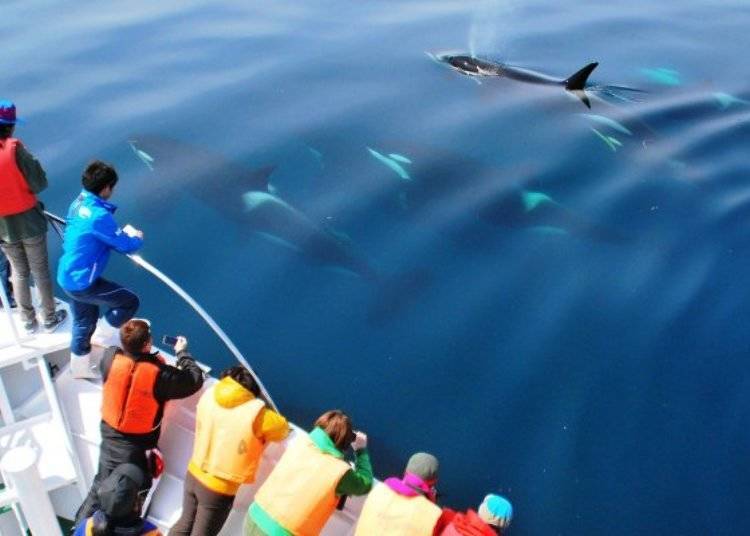
The pointed beak is the characteristic of the giant beaked whales. The body length is as large as 9 m - 11 m and moves with a pod of around 10 others. Although it can be seen throughout the year, the encounter rate is low.
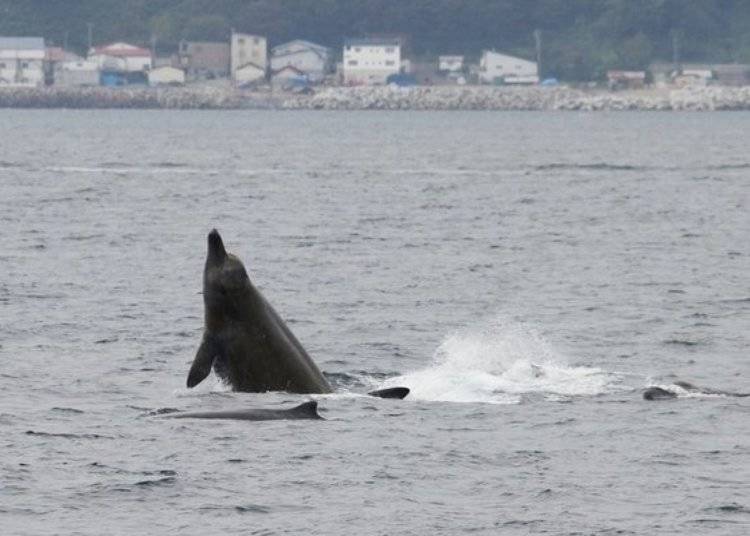
The largest creatures seen in the Rausu Sea are sperm whales that come around July to October. The body length of a male can reach up to 18 meters, and when this figure raises its square head out of the sea to breathe, it is a very dynamic sight!
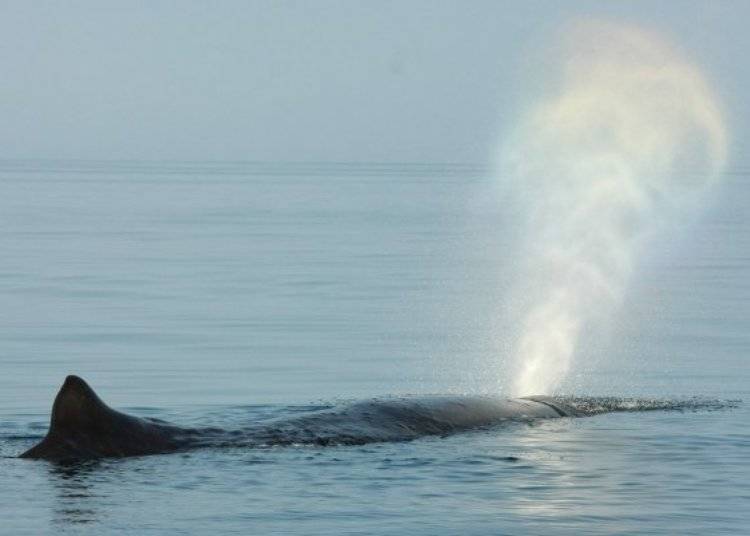
A quick note, humpback whales are rarely in the Shiretoko - Rausu Sea. The Nature Cruise is said to only encounter them at a rate of about once every two years, so consider yourself extremely lucky if you see one.
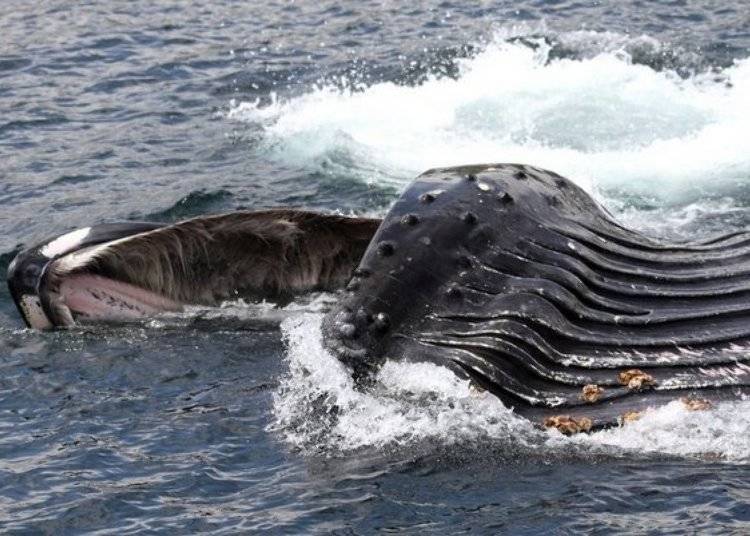
This impressive tour allows you to meet powerful and beautiful creatures in the blue sea of Shiretoko - Rausu. I hope you will experience the pleasant feeling of seeing dolphins and whales swimming in the midst of this magnificent nature.
When visiting the Shiretoko Peninsula, please not only focus on the land, but also look toward the sea!
Plan name: (Rausu) Whale / dolphin / bird watching (4/28 - 10/13)
Average experience time: approximately 3 hours
Price (basic): Junior high school students and above 8,000 yen (tax included)
Meeting time: 30 minutes before departure time
Reservation application deadline: by 6 p.m., two days in advance
Contact hours: 7:00 a.m. to 8:00 p.m.
Closed: irregular holiday
-
Shiretoko Nature Cruise知床ネイチャークルーズ
- Address 〒086-1833 北海道目梨郡羅臼町本町27-1/27-1, Honcho, Rausu-cho Menashi-gun, Hokkaido, 086-1833, Japan
- Phone Number 0153-87-4001
Written by : Etsuro Nagao
Related Articles
Book an unforgettable experience in Shiretoko!
Make your trip extra memorable by booking one of these recommended tours.
- Area
- Category
*Prices and options mentioned are subject to change.
*Unless stated otherwise, all prices include tax.
Limited time offer: 10% discount coupons available now!
Recommended places for you
-
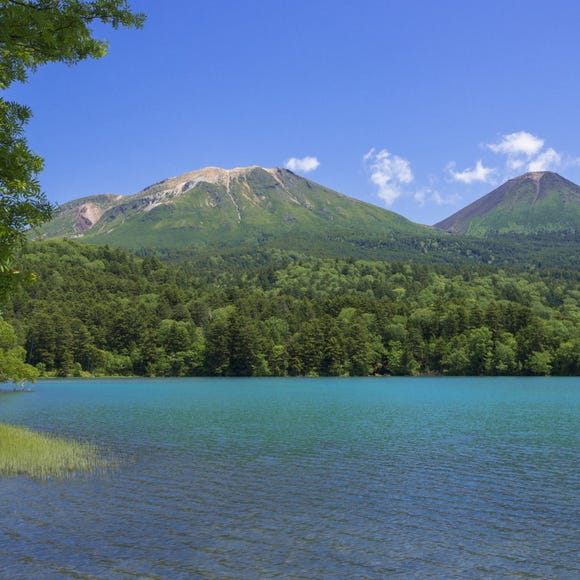
LakeAkan
Rivers, Lakes & Canyons
Abashiri
-
Appealing
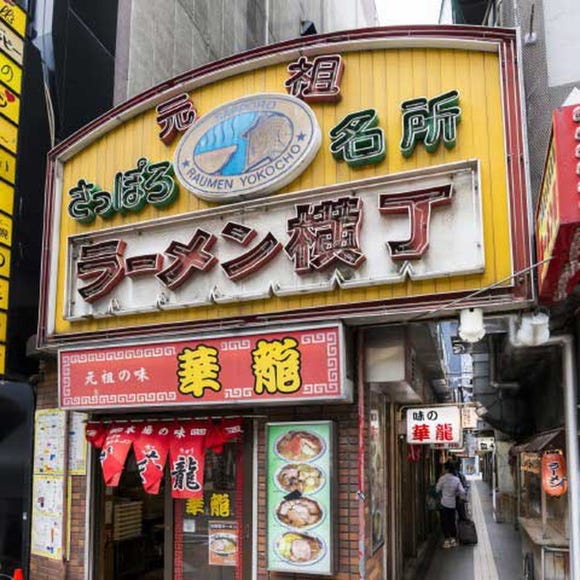
Sapporo Ramen Yokocho
Ramen
Sapporo / Chitose
-
Appealing
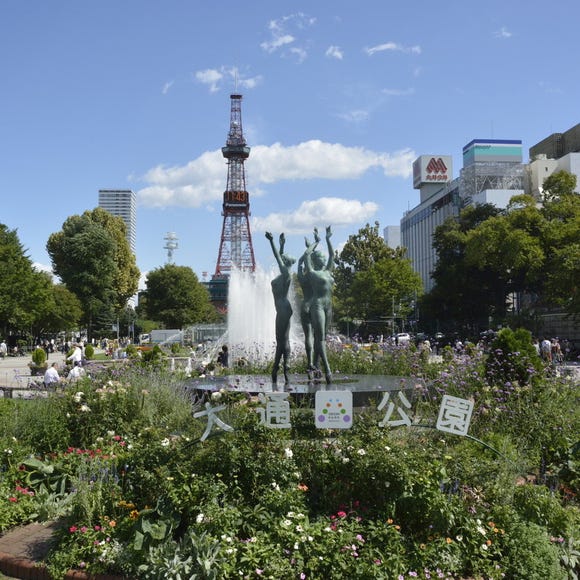
Odori Park
Parks
Sapporo / Chitose
-
Appealing
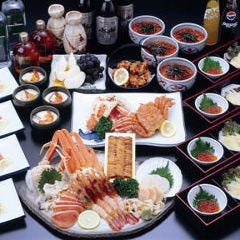
Rukku and Uohei
Izakaya
Sapporo / Chitose
-
Appealing
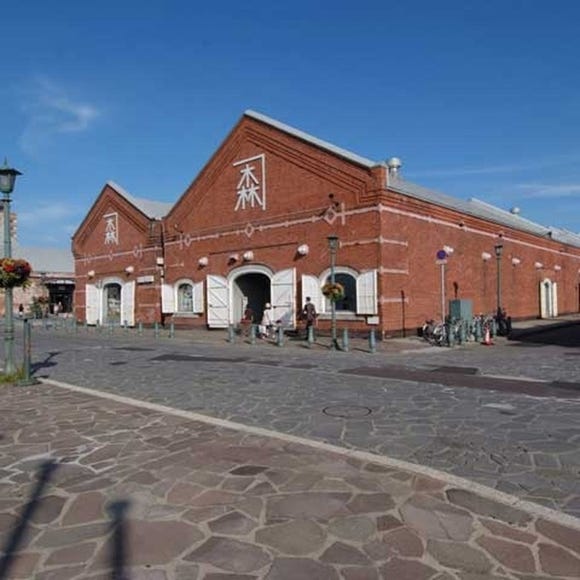
Kanemori Red Brick Warehouse
Shopping Malls
Hakodate
-
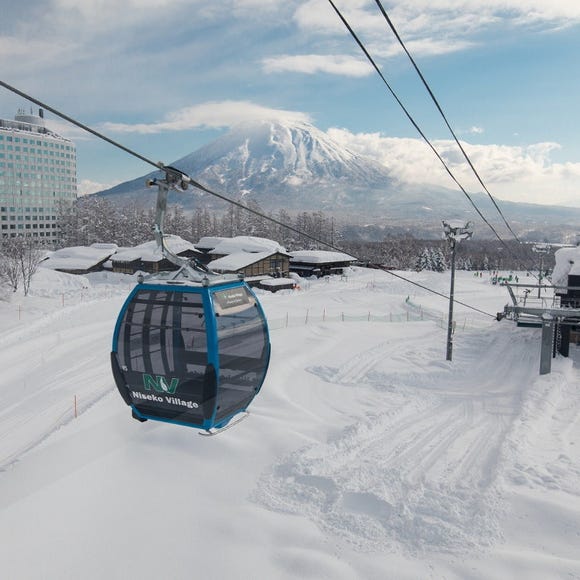
Niseko Village Ski Resort
Skiing & Snowboarding
Niseko / Rusutsu
-

Expert-Recommended! 5 Sapporo Hotels with Great Breakfasts
-
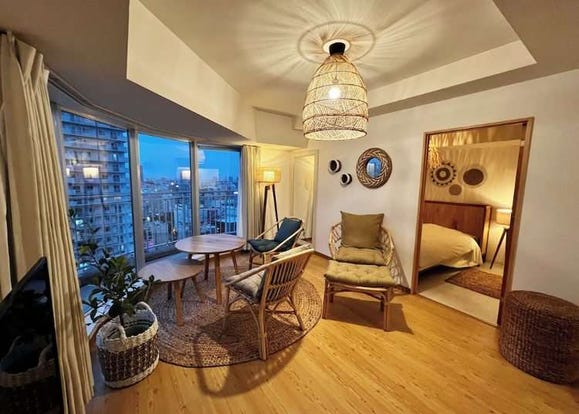
Family-Friendly Accommodations: 5 Recommended Apartment Hotels in Sapporo (Hokkaido)
-

Exploring Moyuk Sapporo: A New Tanukikoji Landmark with an Aquarium and New Donki Store!
-
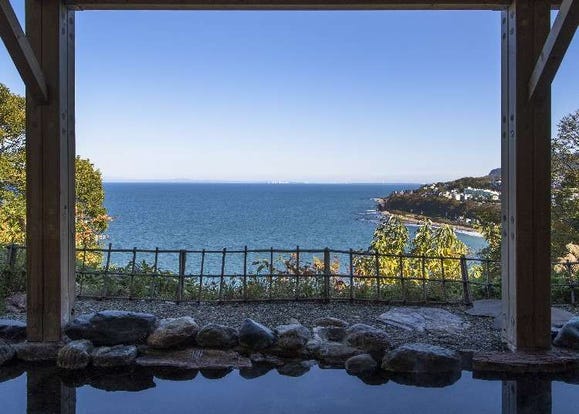
Travel Expert-Recommended! 5 Onsen Hot Spring Hotels & Inns in Otaru (Hokkaido)
-

Hokkaido's ROYCE' Cacao & Chocolate Town: Fun Factory Tour & Chocolate Making Experience
-

Expert-Recommended! 5 Otaru Hotels with Great Breakfasts
-
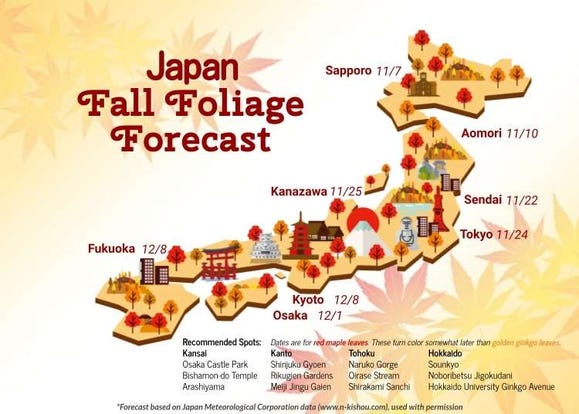
Autumn in Japan 2024: Fall Foliage Forecast & Where to Enjoy the Colorful Leaves (+Tour Info)
-
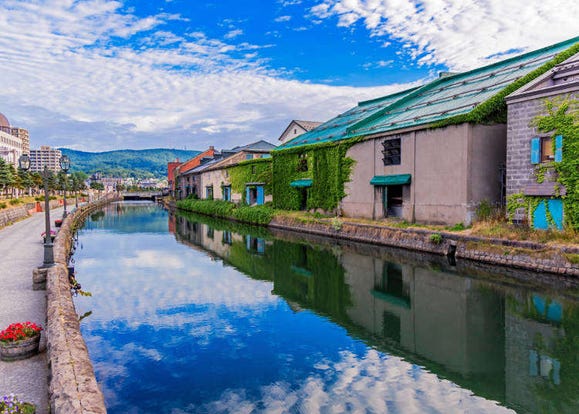
Visiting Hokkaido Japan: 14 Things to Know Before Traveling to Japan's Wild North
-

Japan's Niseko Summer Activities Will Make You Feel Like a Crazy Kid Again
-

Camping in Hokkaido: 5 Campsites For Your Adventurous Side (+Tips on Campervan Rentals)
-

11 Fun Sapporo Tours: Enjoy a Deep Dive With Locals - Famous Landmarks, Food, Excursions & More
-

Summer 2023 Hokkaido Flower Tours - Journey through Japan's Dreamy Lavender Wonderland!
- #best sushi hokkaido
- #things to do hokkaido
- #best ramen sapporo
- #what to bring to japan
- #new years in tokyo
- #what to buy in ameyoko
- #japanese nail trends
- #what to do in odaiba
- #onsen tattoo friendly tokyo
- #daiso
- #best sweets otaru
- #japanese fashion culture
- #best nature furano
- #japanese convenience store snacks
- #best japanese soft drinks












